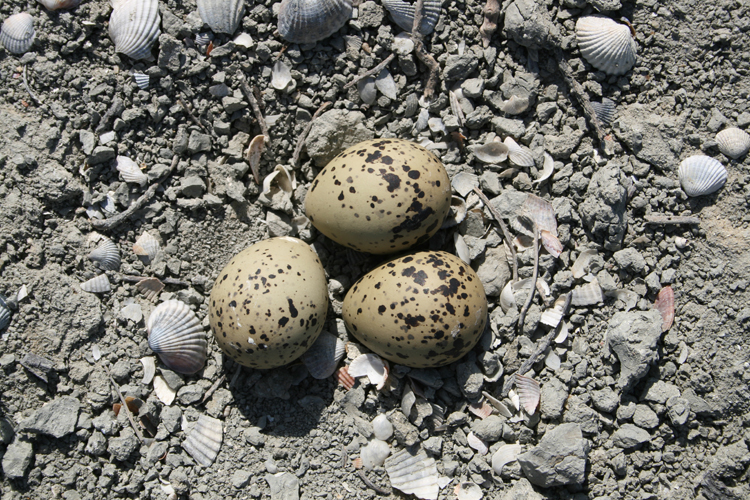Camouflage is a widespread strategy to avoid predation and is of particular importance for animals with reduced mobility or those in exposed habitats. Camouflage often relies on matching the visual appearance of the background, and selecting fine-scale backgrounds that complement an individual's appearance is an effective means of optimising camouflage. It was investigated whether there was an active selection of microhabitats and nest materials in three ground-nesting birds (pied avocet, Kentish plover, and little tern) to camouflage their eggs using avian visual modelling. Plovers and avocets selected substrates in which their eggs were better camouflaged, and that choice was done at an individual level. Terns have lighter, less spotted eggs, and while they did select lighter background than the other species, their eggs were a poor match to their backgrounds. The worse matching of the tern eggs was likely due to a compromise between thermal protection and camouflage because they breed later, when temperatures are higher. Finally, the addition of nest materials improved egg camouflage in terms of luminance, although the materials reduced pattern matching, which may be associated with the different roles that the nest materials play. Active selection of substrates at an individual level may be crucial to improve nest success in species that nest in exposed sites. informacion[at]ebd.csic.es: Gómez et al (2018) Individual egg camouflage is influenced by microhabitat selection and use of nest materials in ground-nesting birds. Behav Ecol Sociobiol 72:142 https://doi.org/10.1007/s00265-018-2558-7


